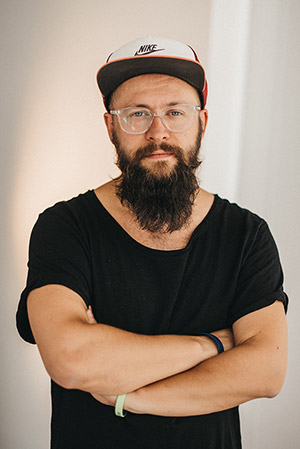
Interview with Piotr Kalinowski, owner of MIXD and author of interior design at ibis Styles Sarajevo
Why were the 1984 Winter Olympics chosen as the main theme of the interior design? What has inspired you? Why?
Piotr Kalinowski: Originally, we actually started with the “City of Bridges” as a storytelling proposition for that hotel but when I visited Sarajevo for the first time, what truly surprised me was the presence of the mountains surrounding the city. Sarajevo is literally located in a valley and when I had a coffee with the local people I saw the ski lift. Its first stop is in the middle of the city itself. When I asked about it, I was told about the 1984 Winter Olympics and how it was important for everyone there. I understood, looking with the eyes of my host, that the Olympics was a game-changing event for Sarajevo, for that part of Europe at that time, and many emotions are still alive today. I started to research it and discovered a marvelous nostalgia, which is connected with this event among the Bosnian people. This is when it all started. Additionally, the hotel investor took us to a sky bar on the 15th floor from where we had a picturesque view on the famous Igman mountain. The story was playing very smoothly during the design phase. Colors, inspirations: it was all great fun to play with, and very inspirational, too.
For many of us, when looking at the interiors of this hotel, we would never have thought that it is a renovation of an existing hotel, the former Hotel Sarajevo. Are the interiors completely re-made or have you left some iconic elements? What was the biggest challenge while designing the interiors for ibis Styles Sarajevo?
Most of the hotel is totally new but we kept many of the existing original elements. The hotel had a tower, which wasn’t finished for many years. So we came up with an idea to keep it with its visible concrete and make it look like it’s still in progress, like the works are not finished. We’ve added some colors linked very much with local elements, like brown, wood and brass details, rendering in that way high contrast and an interesting interior to experience.
Besides the Olympics, the interiors are also filled with local touches, Bosnian motifs, as well as pop art elements. Tell us about it. What emotions did you want to revive?
We really wanted to keep the authenticity of Sarajevo together with some modern elements evoked by winter sports. Once you stroll around Sarajevo, you just can’t ignore Bosnian crafts and materials. It’s all over the city and not like in European cities, where it’s just an additional element to culture, which is often left behind in everyday life and serves only as a tourist attraction. Here, locals live the tradition. The old town is “the” town where everyone spends time and meets friends. Those shops with brass and steel accessories, with bespoke rugs, they all serve the local economy. In Sarajevo, it’s cheaper to use pure wool rugs than printed carpeting. Sarajevo is also full of young people but they are closely connected with local culture. That’s why the ibis Styles brand perfectly matches the location with its colorful, traditional and young elements. What’s more, we have invited Karol Banach, a popular Polish illustrator and graphic designer, to create murals and artworks for this specific hotel. The original style of Karol’s graphic design and illustrations brought the Olympic aesthetics back. We have also revived Vucko, the 1984 Winter Olympics mascot, which appears in many places in the hotel: his portrait hangs above the fireplace in the lobby, where he’s wearing a suit and tie and is already a grown-up. It’s been 30 years after all.
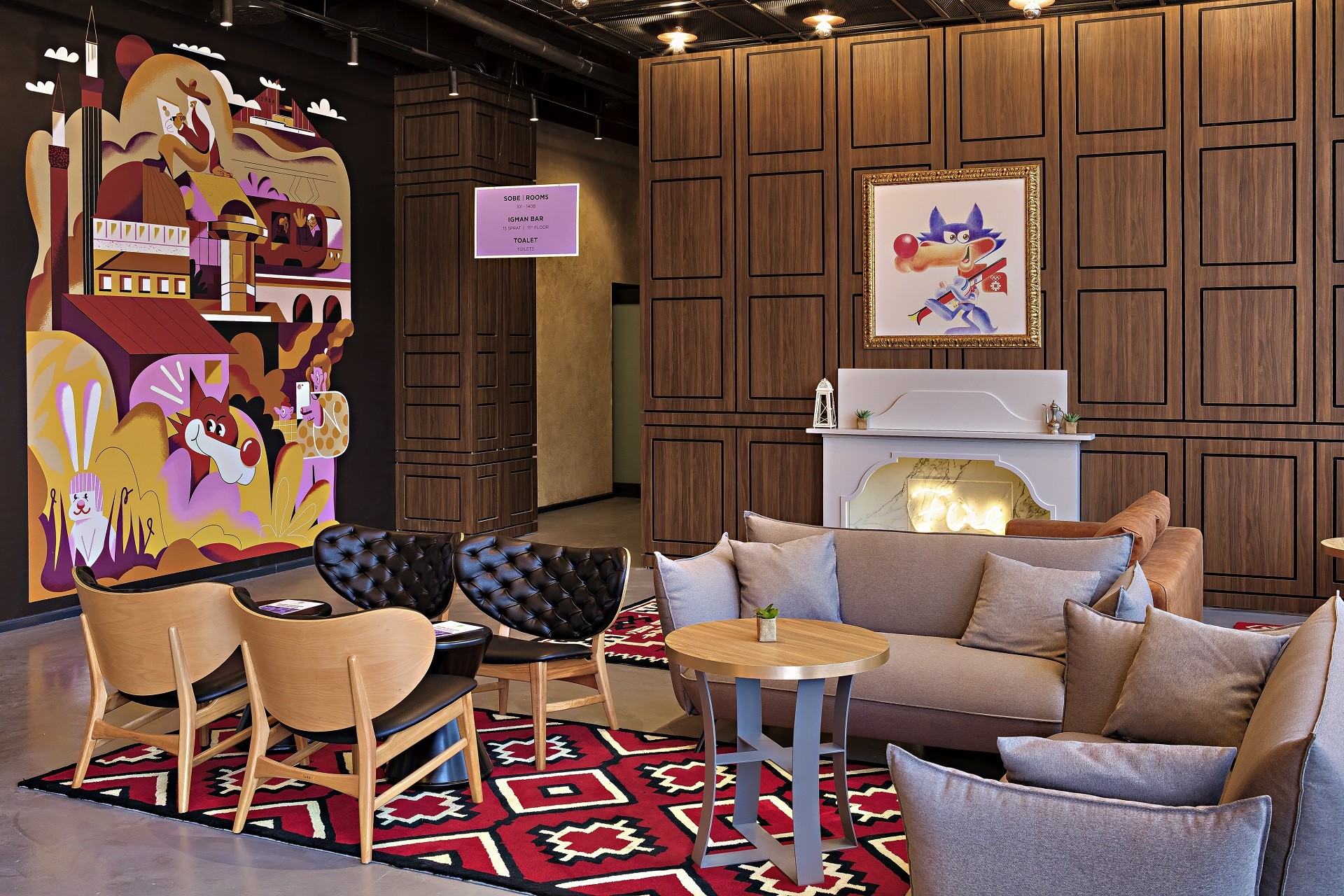
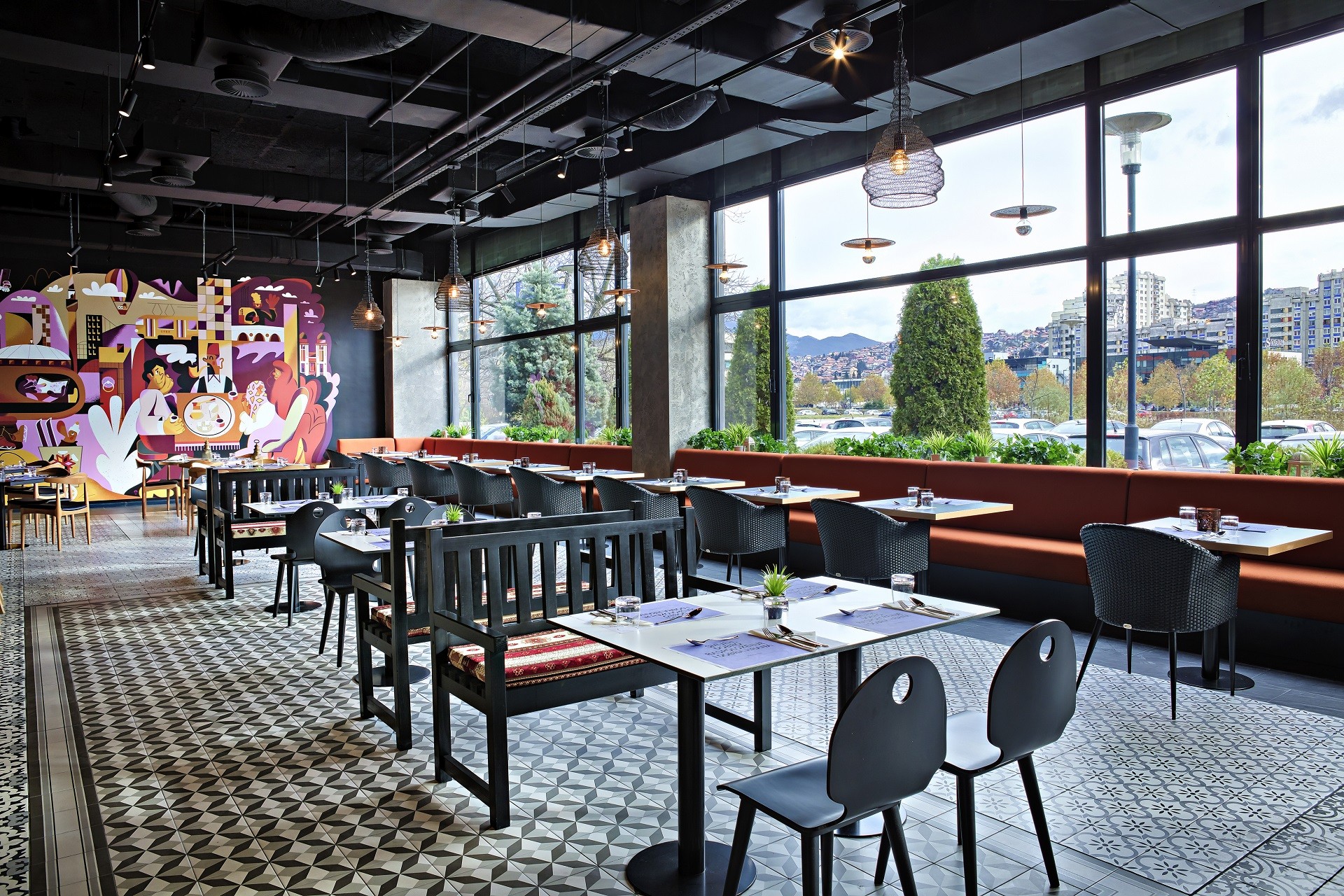
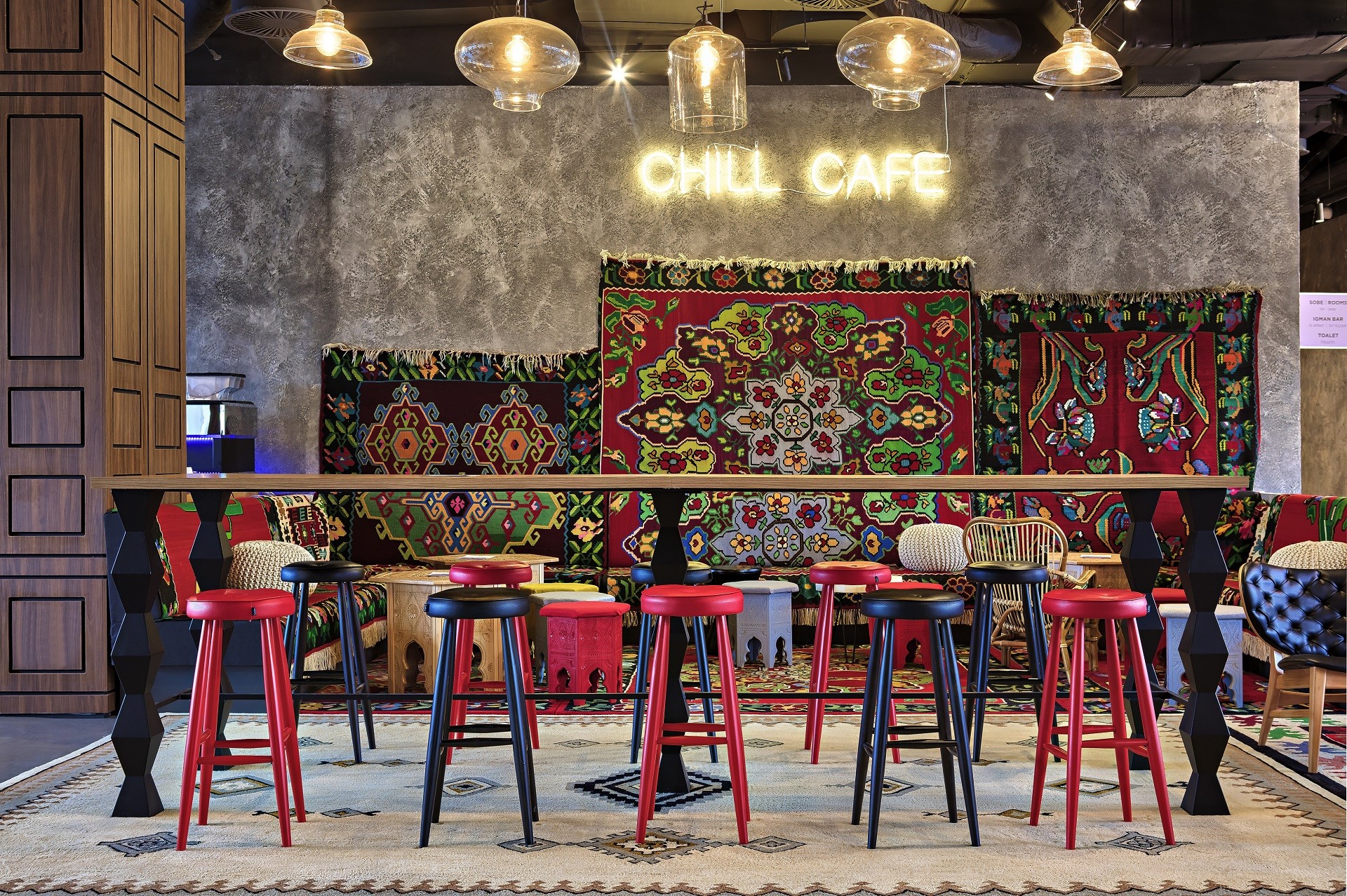
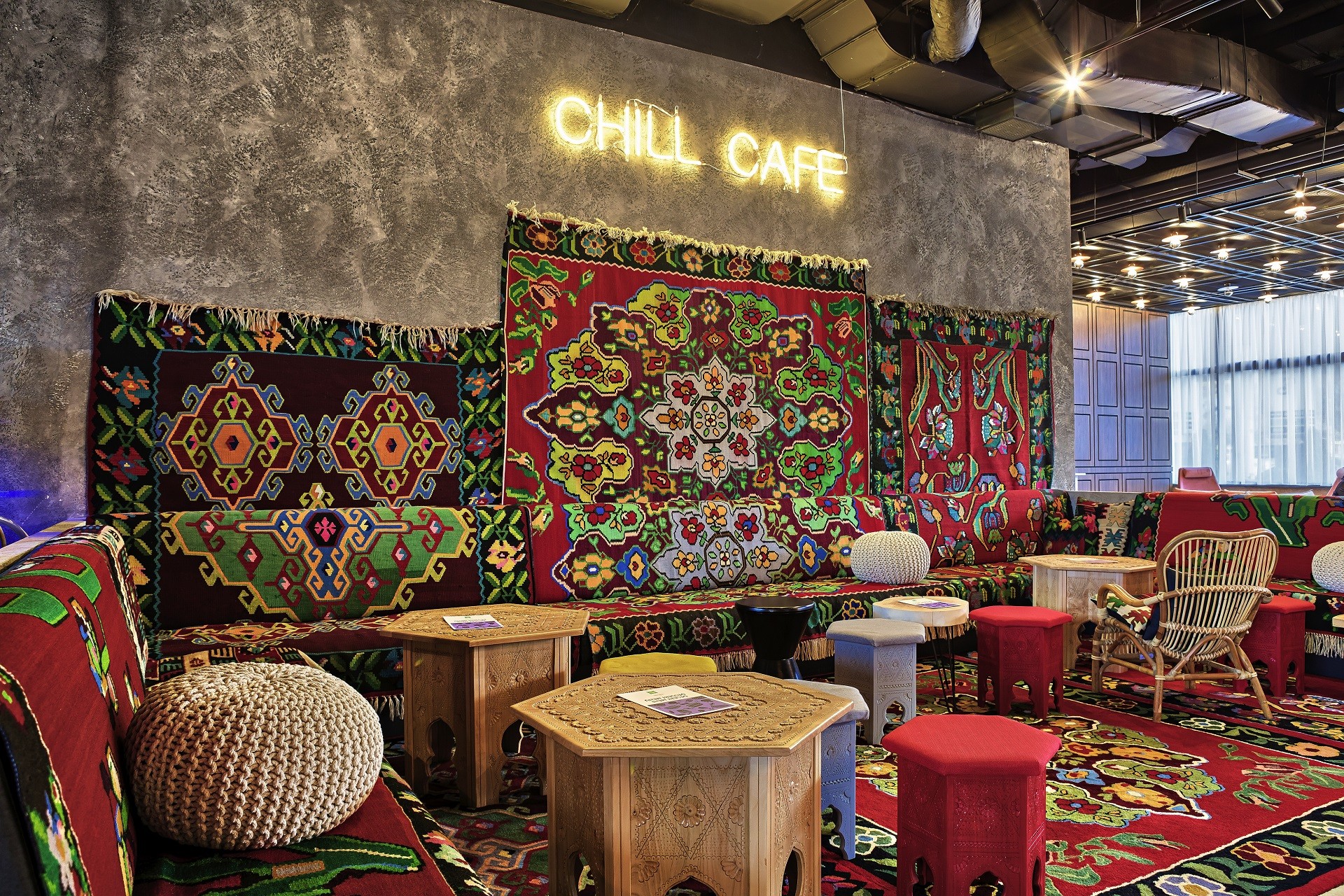
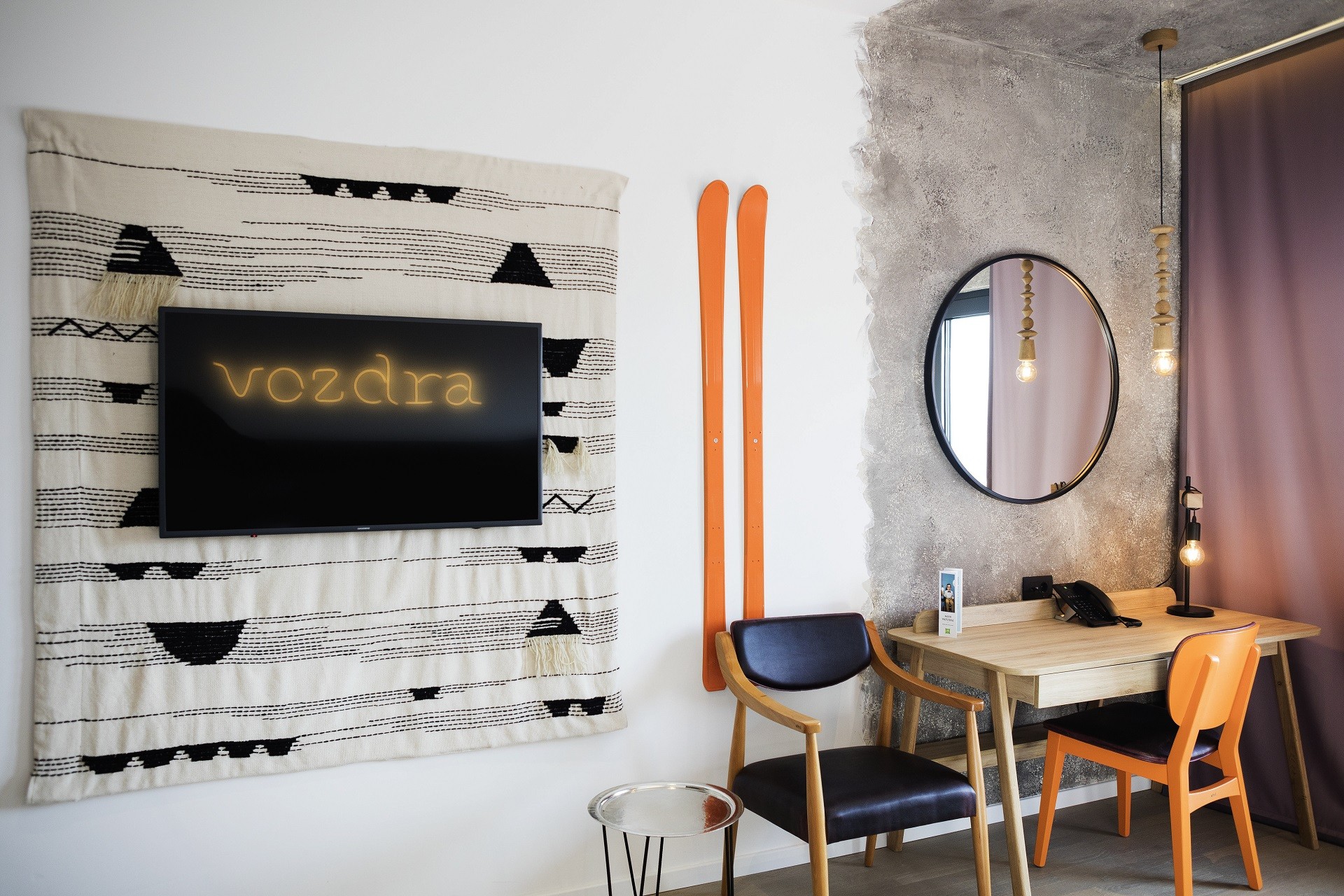
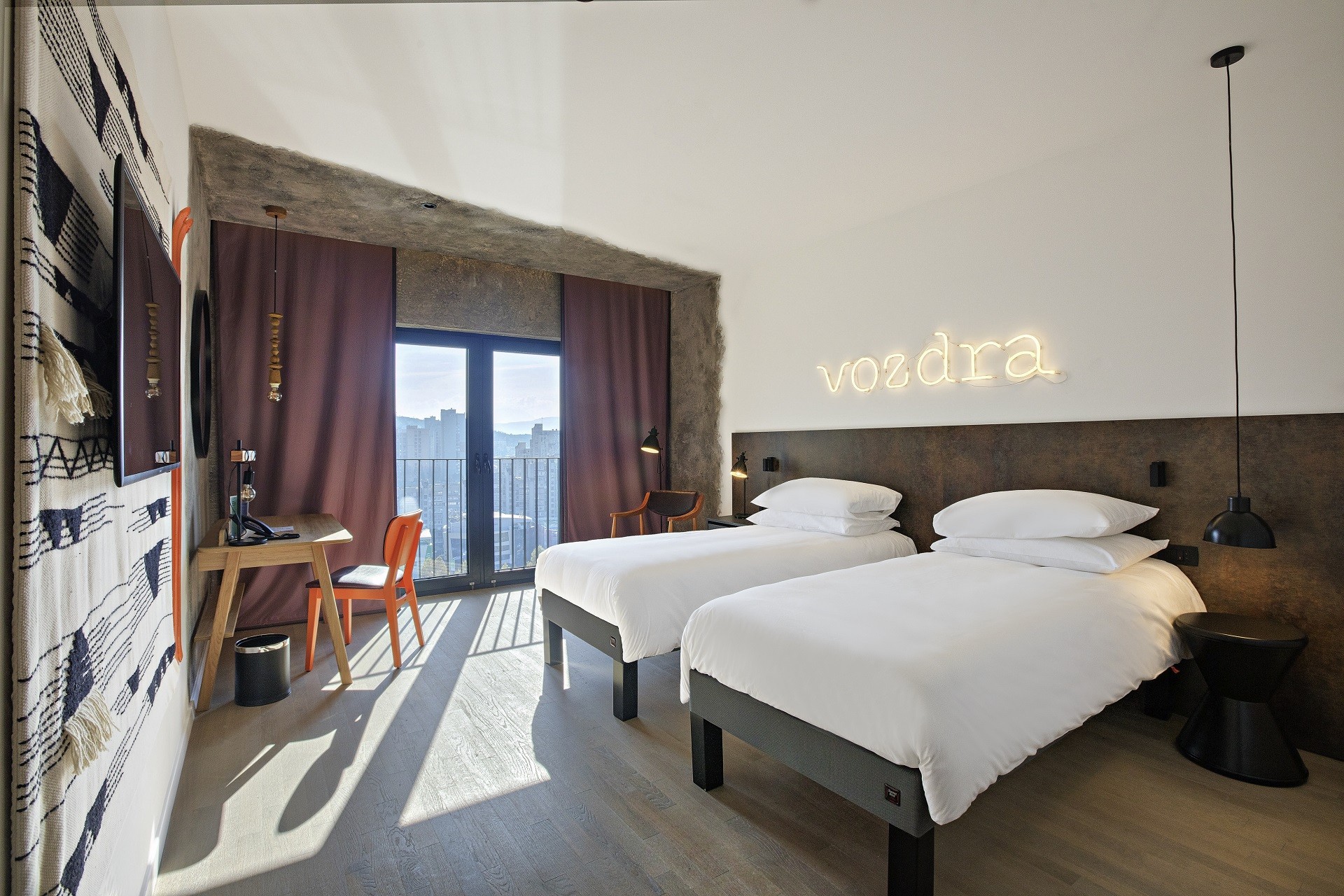
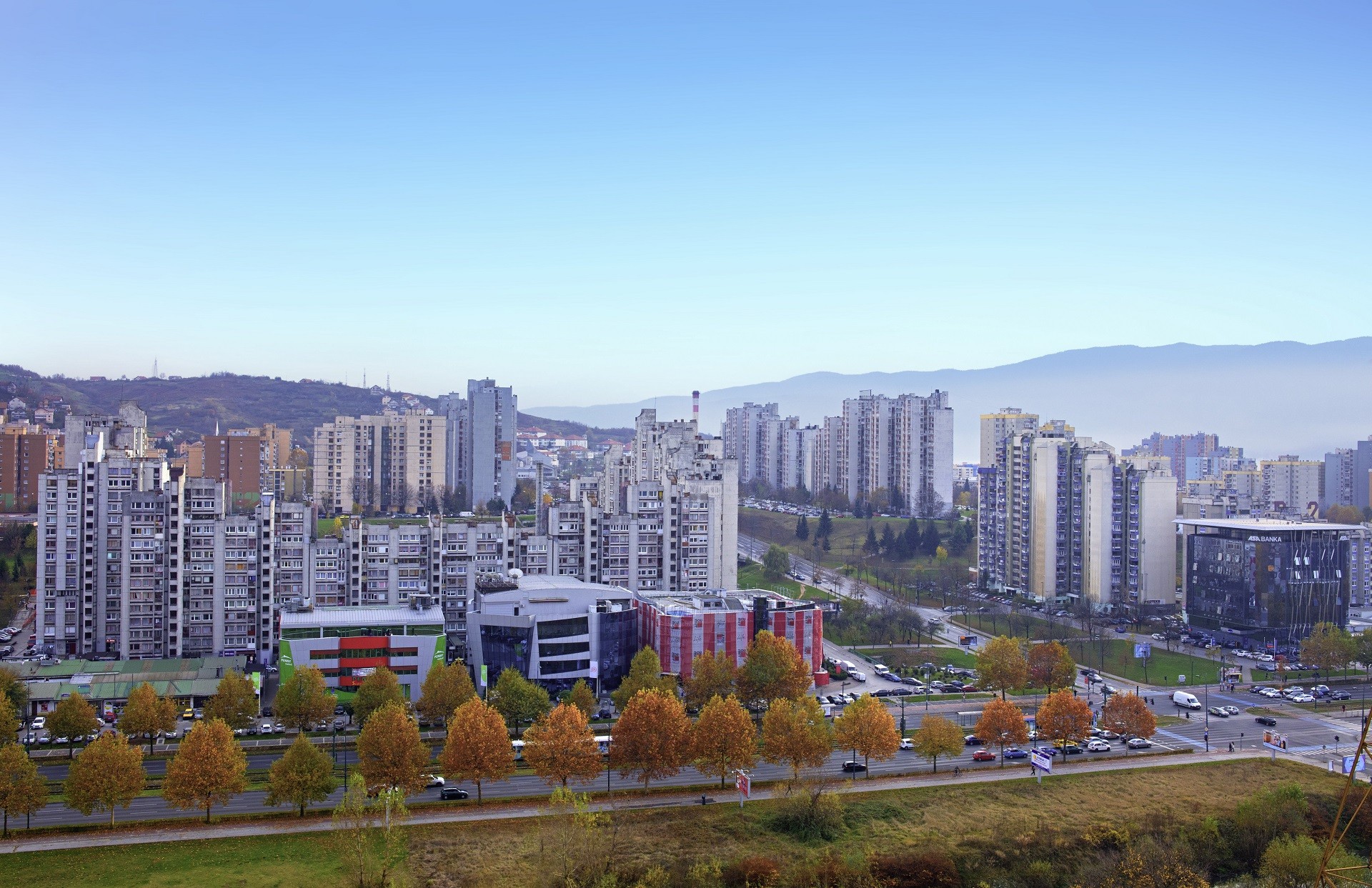
What’s your favorite area, space in the hotel?
The rooms. It all came up very well with all the vintage details being set up nicely. The hotel investor bought 300 pairs of vintage skis. We painted them a neon orange color. This was an effort, but it was worth it. Today, every one of the 192 rooms has an original pair of vintage skis, so the experience is authentic in every room. I enjoy the Skybar, too. I must admit that it was my first sky bar to design so it was pretty new and challenging for me. It’s completely open with a glass façade which offers a panoramic view on three sides, looking out to the mountains that surround Sarajevo.
What have been some of your favorite AccorHotels projects you’ve worked for?
I have been working with AccorHotels for many years now and I must say that all the brands are now facing a major renovation. What is happening at Mercure hotels or the MGallery collection is a blast. The interior design boundaries are being pushed to the edge and architects have much more freedom to play with space. This new approach has brought out many ideas which used to be forgotten, and now there’s a rapid, young movement going on within these brands. You have - for example, the crazy 25hours, which is already a classic. I truly enjoy the brands’ variety and the new movement at Accor. My favorite projects are the MGallery by Sofitel in Jurata, the Novotel Wroclaw Center which brought me to London to receive the International Property Award for Best Hotel Interior Poland 2016/2017, and my first project for the Novotel Krakow Centrum lobby, which still serves guests to this day. I also like the interiors of the ibis Styles Budapest Center with storytelling around my beloved vintage computer games. I took part in the design of around 20 completed projects for Accor since 2012 and 40 interior design concepts.
What or who are some of your hotel design inspirations? Do you have a hotel or restaurant design heroes?
Love this question. My all time-favorite is Curiosity studio from Tokyo, which brought me to hotel and hospitality design. I love their design mission, stated in their name. They said in an interview that they are still fresh because they “redefine themselves with each project,” which I was very much inspired with so it became one of my mottos in design. I think some of the best projects so far are coming from Jouin Manku. Their projects are so diverse and different from one other. Everything is perfectly executed in detail and their works have character, so I remember them all. I’m also under the spell of works by Ian Shreger. The Public hotel in New York or the Edition hotels are to me one of the best designed hotels in the world. They perfectly capture the spirit of the city and the building. I’ve met the shop curator from the Public Hotel and I see how much energy they’ve put in to have all the details set for the experience. This is ultimate quality. To me, it’s just the best design and it’s made for people, it’s practical.
What advice would you share with a hotel investor?
Choose a hotel brand but only after you have experienced it and can really say which brand is your favorite. As an investor, your business plan will be very much connected with the brand you choose, the location of your hotel, the city as the destination. All these elements will have a major impact on the style of the hotel. Whether it is a resort, a lifestyle or urban hotel, or a business hotel, you need to carefully choose the brand. And to complicate things, brands are no longer pure business or pure leisure. The design and experience of brands mix so much that sometimes the corporate guest may prefer to stay in a craziest lifestyle hotel rather than one that is purely a business location. Things have changed. Our lifestyles change and they change so rapidly that you need to experience it first. Next week, I am travelling with my new clients to London for a couple of days to experience the variety of today’s hospitality. We are starting two new hotel investment projects with them, and I could not imagine that we would not want to jump on a plane and see it for ourselves. We want to discover new brands and we will talk about what’s in it for us and what will not work for us. It’s important to have a kind of bond with your architect when starting a new cooperation project. The investor needs to get inspired and to discover hospitality in order to have a proper understanding. Not everyone follows the hospitality scene that much because hotel investment is pretty complex and hotel knowledge is pretty niche. So, if you’re a hotel investor, don’t try to know it all, just ask the right questions to the right experts.